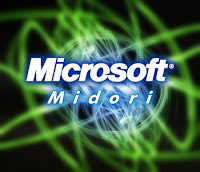 Intel released a new product by the name intel Itanium 9500 series with 32 nm generation. This new product has replaced the previous product in 65 nm with a 9300 series. Products that have previously code-named Tukwila, and was present in February 2008, this time has been replaced by products that have code-named Poulson.
Intel released a new product by the name intel Itanium 9500 series with 32 nm generation. This new product has replaced the previous product in 65 nm with a 9300 series. Products that have previously code-named Tukwila, and was present in February 2008, this time has been replaced by products that have code-named Poulson.
Poulson is a major change in Intel's Itanium strategy. Because it is a proprietary mainframe processor. This product is subject to change, which originally only focused on the plant mainframe before, are now focusing on cloud infrastructure, both for private clouds and cloud environments. Intel's new Itanium order to align more closely with the structure of x86, which can make the 9500 series chipset compatible with Xeon E7 processor, AOS 7500-series. Intel also noted that the new Itanium share an Xeon, AOS buffer memory, interconnect and industry standard memory that Itanium has a low production cost.

Compared to its predecessor, the intel Itanium 9500 to provide performance up to 2.4x, and 33 percent greater than the bandwidth. 3.1 billion transistor chip (a chip that contains as many as 3.1 million transistors) can also integrate up to 54 MB on-die memory and supports up to 2TB in four low-voltage DIMM socket. Resources used were little changed. Products 9300 series running between 1.6 GHz to 1.73 GHz require 130 to 185 watts of power. While the 9500 series running between 1.73 GHz to 2.53 GHz, requiring only a power of 130 to 170 watts.
At the time of launch, Intel offers this product in four versions, the version 9520 (quad-core, 1.73 GHz), 9540 (8-core, 2.13 GHz), 9550 (quad-core, 2.4 GHz), and 9560 (8-core, 2.53 GHz). Intel opening price of $ 1,350 for 9520 and $ 4,650 types for type 9560.














